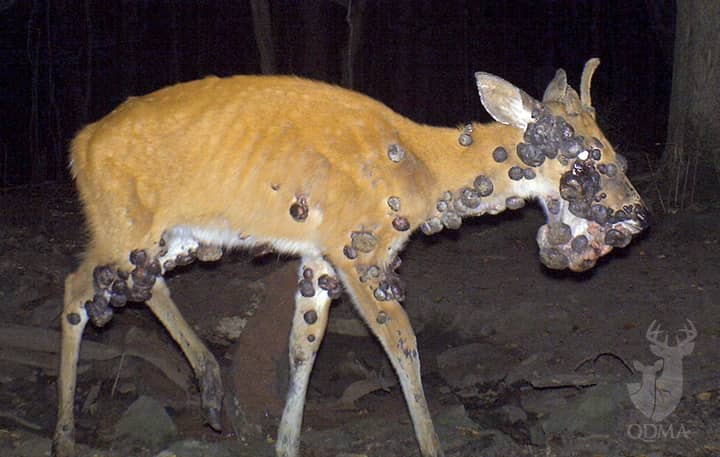Video: What are Cutaneous Fibromas?
Daniel Xu 11.04.13

No, it’s not a severe case of deer acne, but the grotesque and wartlike growths called cutaneous fibromas may leave some outdoorsmen confused. Common questions are often: is the meat safe to eat? Is it a symptom of chronic wasting disease? Is it contagious?
The answers would be yes, no, and no, respectively. Cutaneous fibromas are caused by a virus that affects the skin. Bucks are more likely to contract the virus through wounds, often after a fight with another male or by rubbing antlers on a tree. Other modes of infection involve biting insects, which seem to be a never-ending hazard for deer. The virus that causes cutaneous fibromas is found throughout the entirety of the whitetail deer’s range and its physical symptoms are often referred to as “deer warts.”
Except for some extra weight and discomfort, the growths are not usually harmful. They can on occasion hamper vision, eating, and breathing. The disease does not extend much further beyond the skin and has no effect on the quality of a deer’s meat. While some may be hesitant to eat a deer covered in warts, wildlife experts say the venison is perfectly safe. Cutaneous fibromas are not contagious and will not be spread to other animals or humans. It is also relatively uncommon.
For biologists, it is a curious skin blemish that poses little problem to the deer population at large. However, some exceptionally extreme cases may give you a scare the next time you review your trail cam footage. Other animals suffer similar maladies, such as Shope papilloma virus for rabbits, which will often lead to the animal’s death. That disease was named after virologist Richard Shope, who was also a notable researcher on cutaneous fibromas and influenza.
Embedded below is a video of a hunter investigating a deer with several fibromas.

